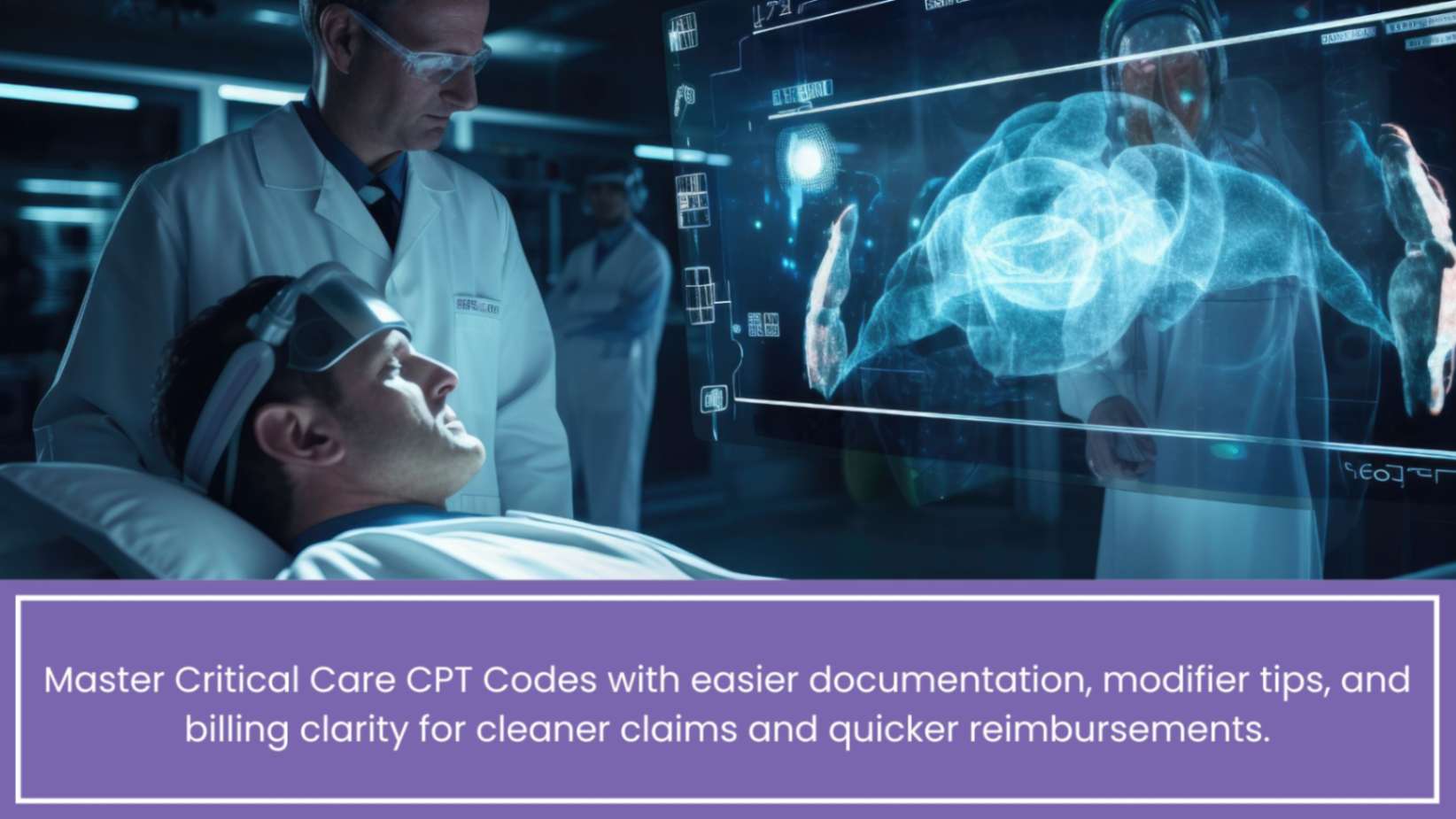Impact of Patient Experience on RCM Success
The success of the revenue cycle is now also decided by patient experience. From scheduling the visit to making payment for the treatment received, every interaction has an impact on patient loyalty and billing accuracy. This blog delves into the Impact of Patient Experience on RCM Success and how front-end RCM can make or break the financial flow. Learn key statistics, insights, the latest trends, and simple strategies to improve patient satisfaction and optimize payments. With insights on automation, staff training, and proper communication, you can turn patient interactions into strong financial outcomes.
Table of Contents
The Impact of Patient Experience on Front-End RCM Success
When a patient scheduling appointment, every step afterward—from check-in to payment—affects your practice’s finances. The front-end revenue cycle (before care) isn’t just paperwork and insurance checks. It’s how patients feel. A smooth experience means faster payments, loyal patients, and seeing billing as part of care. A confusing one risks delays, complaints, or losing patients.
Here, we’ll show how patient experience shapes front-end revenue management. You’ll get current stats, trends, and practical steps. Our goal: Help you build a process that boosts revenue while patients feel valued.
What is front-end RCM?
The revenue cycle begins when a patient books an appointment and ends when payment is collected. The “front-end” focuses on early steps:
- Scheduling appointments & handling referrals
- Registering patients (details, insurance, consent)
- Verifying insurance coverage
- Getting prior approvals if required
- Discussing upfront payments (co-pays, deductibles)
- Educating patients about costs and payment choices
Mistakes here affect billing, medical coding, claims, and collections. That’s why refining the front end matters. As one expert puts it, “What happens before treatment is as crucial as what comes after.”
How Patient Experience Ties to Front-End RCM
Every touchpoint shapes patient loyalty. Get it right: you build trust. Get it wrong: you lose revenue. Here’s how patient experience drives your front-end revenue cycle:
1. First impressions steer payment behavior
Patients judge your practice at scheduling and check-in. A chaotic front desk, missed calls, or confusing insurance details spike stress. Stressed patients cooperate less and pay more slowly.
2. Clarity cuts collection delays
When patients know their costs, coverage, and payment choices upfront, they feel valued. Clear estimates and flexible options prevent payment resistance. As industry reports confirm, “Patients demand straightforward billing and seamless payment experiences.”
3. Reduced delays boost cash flow
Accurate patient checks mean cleaner claims. Fewer denials and reworks speed up payments. Patients treated well also pay co-pays upfront more often. This cuts accounts receivable days and keeps cash flowing.
4. Happy patients pay faster
Good experiences build loyalty and reviews—but also impact payments. The Patient Financial Satisfaction Score tracks billing happiness. Practices scoring higher see fewer complaints and better payment rates.
5. Fix mistakes early, save revenue later
Front-end errors (wrong insurance, missing authorizations) cause denials, delays, and angry patients. Studies show many denials start here. Reduce these mistakes to protect both patient trust and your income.
Key Statistics & the Business Case
Let’s look at the facts:
90% of claim denials can be avoided. Better front-end checks—like confirming coverage—are vital.
The RCM market is expanding fast: from $137 billion in 2023 to $372 billion by 2032.
Patient happiness now impacts payments. Satisfied patients pay faster.
Half of billing denials start at the front end.
Focus here: happier patients mean fewer errors, quicker cash, and a stronger revenue cycle.
Current Trends You Should Know
Here are five key business trends linking patient experience to front-end revenue cycle management:
Trend 1: Digital self-service tools
Patients seek online scheduling options, quick follow-ups on their phones, and proper cost estimates. These reduce wait times, paperwork, and registration errors, which are all major roadblocks to clean billing workflows.
Trend 2: Clear upfront costs and payments
Patients often require flexible deductible payment options due to the high costs associated with their healthcare. Providing accurate estimates and variable payment options, such as point-of-service, online, and financing, enhances patient satisfaction and improves cash flow.
Trend 3: Automation and AI
Automation of key processes like eligibility checks and healthcare prior authorization minimizes errors and the front-end operations. AI identifies risks and flags registration issues before claims are sent.
Trend 4: Patient-first billing culture
Financial interactions must be treated like patient care experiences. Train billing and patient registration staff through clear and empathetic communication. Happy patients become loyal customers.
Trend 5: Data-driven decisions
Track key metrics, including clean registration rates, collections at POS, and billing performance scores.
Dashboards display the payment gaps.
Employ practical measures to improve patient experience at the front end.
Let’s look into some practical steps to streamline the front-end/clinic tasks.
Step 1: Simplify patient check-in
- Enable online scheduling and digital platforms upfront.
- Leverage tablets or kiosks for faster in-office registration.
- Train staff to confirm patient information on their arrival.
- Apply the same process consistently for all patients.
Step 2: Confirm insurance coverage proactively
- Verify patient benefits shortly after scheduling.
- Check if pre-authorization is required and secure it early.
- Clearly explain patient costs before the treatment.
Step 3: Explain costs and payment choices
- Deliver simple cost estimates to patients.
- Clarify out-of-pocket costs and insurance coverage for their treatments.
- Share payment options like online, cash, or any other setups available.
- Teach your team to talk upfront about costs and push it until after the medical billing process.
Step 4: Collect payments during visits
- Set a rule: ask for patient payments at or before appointments when possible.
- Make paying easy: use mobile apps, card readers, or online tools.
- Clear signs and staff reminders help patients expect this step.
Step 5: Train Staff for Patient-Focused Service
Teach front desk and scheduling teams major communication skills: tone, clarity, and care. Ensure they can manage basic billing queries. How patients feel about payments impacts their view of clinical care.
Step 6: Track and Optimize with Tech
Track core aspects for smooth flow: eligibility success, registration issues, upfront payments, and billing satisfaction. Leverage dashboards to find trouble spots. Automate recurring tasks like data entry, eligibility checks, and payment reminders. Links scheduling, registration, and billing systems to avoid mismatches and reworks.
Step 7: Talk money early
- Send reminders before the patient visit. Include cost information, insurance rules, and payment steps.
- Mail bills shortly after the visit. Make the bills easy to understand.
- Offer simplified options if patients worry too much about costs.
Fix these 7 aspects to sync patient care with payments. This way, you eliminate billing headaches, and patients feel valued at the same time.
Why Patient Experience Is a Business Priority, Not Just a Nice-to-Have
Improving and automating patient insurance checks is the smarter business
- Money in faster: Smooth starts mean fewer claim denials, quicker payments, and less bad debt.
- Save costs later: Fixing mistakes early avoids expensive appeals and collections.
- Keep patients loyal: Patients treated well return and refer others. They won’t leave bad reviews or shop around.
- Stand out: As patients expect more, practices with easy, clear experiences win.
- Avoid trouble: Correct registration stops billing surprises and delays.
So fixing the front desk helps patients and your bottom line.
What the Future Holds: Looking Ahead
As we move from 2025 and beyond, blending the front-end revenue cycle and patient care has become pivotal. Key trends:
More AI and automation: Self-service portals, automated patient intake, and predictive eligibility checks will grow.
Industry leaders note: “Top firms integrate smart systems for real-time choices. They leverage front-end tools to automate eligibility checks, create instant cost estimates, and cut data errors.”
Patient billing satisfaction as a core measure: More groups will track billing happiness and tie it to front-end steps. The thinking: If billing talks are part of care, treat them that way.
Unified clinical and financial steps: Scheduling, care, and billing will merge. For instance, patient portals will show appointments, cost estimates, and payment choices together. Real-time insurance data will sync with advancedMD EHR and sign-up systems.
More consumer-like healthcare experiences: Patients want healthcare to be as easy as shopping or banking. They expect mobile check-in, clear prices, payment options, and digital bills. As patient grow their understanding, it’s important for clinics to create change for simpler and adaptable modern billing solutions. Large hospitals get their way, but small clinics and outpatient centers also need to get into the modern billing landscape. Thus, there is a need for simpler solutions.
Regulatory & compliance evolution: Rules for patient billing and price transparency keep changing. Front-office processes must update quickly to avoid fines. Practices that put patient experience first will win.
Conclusion: Bringing It All Together
The front-end revenue cycle links patient experience with financial health. Accurate registration, complete insurance checks, clear cost talks, and simple payments give patients a good start. This leads to easier billing, quicker payments, and stronger revenue.
But if patients feel confused, struggle with forms, or face surprise bills later, it hurts more than reviews. It hits cash flow, causes claim denials, hurts collections, and damages referrals.
Focusing on front-end patient care builds trust, cuts friction, and creates an efficient, compassionate practice. Good patient care fuels financial strength.
If you’re seeking a partner to boost front-end revenue cycle performance and enhance patient satisfaction, explore Practolytics’ solutions. We provide automated workflows for smoother registration and eligibility checks, real-time dashboards to pinpoint bottlenecks, expert training for staff communication, and flexible staffing during high demand. A seamless front end means happier patients and stronger revenue health.
Ready to elevate patient experience and front-end revenue cycle management? Reach out to Practolytics for a free assessment and discover how your care journey can transform.
ALSO READ – Essential Tips for Error-Free Orthopedic Billing and Coding: Boost Your Practice’s Financial Health






